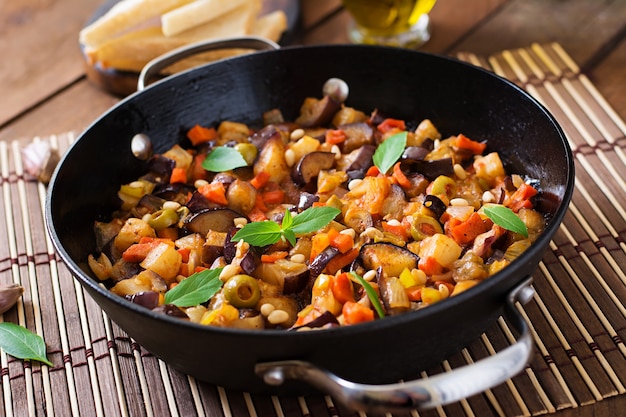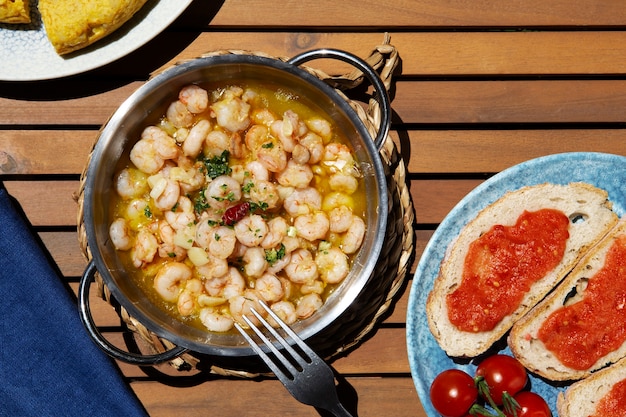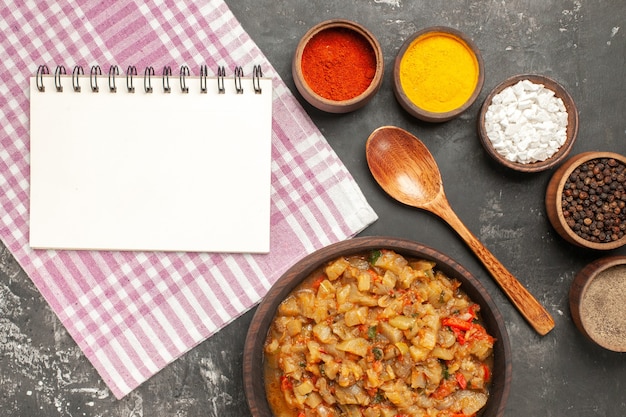I'm no culinary wizard, but when it comes to pinto beans, I've got a recipe that's as reliable as the old family clock. It's a simple truth - these humble legumes are incredibly versatile, filling, and just plain delicious. After years of experimenting in my own kitchen, I've perfected my stovetop method for cooking them to absolute perfection.
So, grab a cuppa, relax, and let me take you through my journey, sharing the tips and tricks that have transformed my bean-cooking game.
(Part 1) A Bean-Lover's Journey: From Mushy Disasters to Perfect Beans

My love affair with pinto beans began in my grandma's kitchen. She'd whip up the most incredible chili, the aroma filling the house with warmth and anticipation. It was in those early days that I realised the magic of a good bean.
But honestly, my first attempts at cooking beans weren't exactly a triumph. I'd often end up with mushy, flavourless blobs, a far cry from the perfectly tender beans I craved.
The First Breakthrough: Understanding the Science of Soaking
It was a bit of a revelation when I finally started understanding the science behind cooking beans. It's all about the soaking process! Soaking not only makes them cook faster but also helps remove some of the gassy compounds, a win-win for everyone.
The Importance of Soaking: Why It's Not Just a Suggestion
Soaking overnight is absolutely crucial, especially for dried beans. It rehydrates them, allowing them to absorb water and cook more evenly. It also breaks down complex sugars called oligosaccharides, which are the primary culprits behind those pesky gas issues.
Think of it this way: if you try to cook dry beans directly, you're putting them through a lot of stress. This can result in inconsistent cooking, potentially leading to mushy beans. Soaking gives them a chance to relax, soak up some moisture, and prepare themselves for the transformation ahead.
But let's be honest, we don't always have the luxury of overnight soaking. We've all been there, right? Sometimes I need a quick and easy solution, so I've developed a technique that gets the job done in a fraction of the time.
Quick Soak Method: A Time Saver for Busy Days
When I'm in a hurry, I'll use a quick soak method. It's a bit of a shortcut, but it still produces excellent results. You simply bring a pot of water to a boil, add the beans, and let them sit for an hour. The boiling water helps them soften up quicker, and the hour-long soak is enough to get them ready for cooking.
(Part 2) Setting the Stage: The Essential Equipment for bean cooking Success

Now, let's talk equipment. You don't need a fancy kitchen to cook perfect beans, but there are a few essentials that make a world of difference.
The Perfect Pot: Choosing the Right Size and Material
Firstly, you'll need a pot that's large enough to accommodate the beans with plenty of room for them to cook evenly. I use a large, heavy-bottomed pot. It distributes heat evenly, preventing hot spots that can cause beans to cook unevenly and lead to those dreaded mushy patches.
The Importance of a Colander: Not Just for Pasta
Don't underestimate the power of a colander! You'll need one to rinse the beans after soaking and to drain them once they're cooked. It's a simple tool that makes a big difference.
(Part 3) The Magic Begins: A Step-by-Step Stovetop Guide for Perfect Pinto Beans

Okay, now that you've got the basics covered, let's get cooking! I'm about to reveal my tried-and-true stovetop method.
1. Rinse and Drain: A Clean Slate for Perfect Beans
Start by rinsing the soaked beans thoroughly under cold water. It's important to remove any debris or grit that might have accumulated during soaking. Drain them well, using a colander.
2. Start with the Base: The Foundation of Flavor
In your large pot, add water, covering the beans by about two inches. I typically use about 6 cups of water for 1 cup of dry beans. You can always add more water as needed during cooking.
3. The Flavor Boosters: A Symphony of Taste
Now comes the fun part! This is where you add your personal touch to create the perfect flavour profile. I typically start with an onion, a few cloves of garlic, and a bay leaf. These create a wonderful base flavour that will complement just about any dish.
Don't be afraid to experiment with other flavour enhancers like:
- A sprig of fresh thyme or rosemary
- A pinch of smoked paprika for a smoky depth
- A pinch of chili powder for a touch of warmth
- A small piece of ginger, grated, for a unique flavour
4. The Simmer: Patience is Key
Bring the water to a boil, then reduce heat to a gentle simmer. This is where the magic happens. It's important to keep the heat low and steady, allowing the beans to simmer slowly and develop their full flavour. Over-boiling can cause them to become mushy and lose their shape.
5. The Taste Test: A Crucial Step
After about an hour, check the beans for tenderness. They should be cooked through but still hold their shape. If they're still too firm, continue simmering, adding more water as needed. The cooking time can vary depending on the age and type of beans, so be patient and check regularly.
6. Salt and Season: The Finishing Touches
Once the beans are tender, season them with salt and any other herbs or spices you desire. A good pinch of cumin, chili powder, or smoked paprika is always a winner. I often add a pinch of red pepper flakes for a subtle heat.
7. Rest and Relish: The Final Phase
Once the beans are perfectly cooked and seasoned, let them rest for about 15 minutes. This allows them to absorb all the delicious flavours and become even more tender.
And there you have it! Your perfect pinto beans are ready to be enjoyed in countless ways.
(Part 4) Beyond the Basics: Variations and Enhancements
Now that we've mastered the basics, let's explore some exciting variations and enhancements that can take your pinto bean game to the next level.
1. Spicy Kick: A Burst of Heat
For a fiery twist, add a touch of heat with a pinch of cayenne pepper or a few jalape??os. If you like it really hot, try adding a teaspoon of hot sauce or a dash of habanero powder. Remember, a little goes a long way, so start with a small amount and adjust to your taste.
2. Smoky Depth: The Power of Smoked Paprika
Smoked paprika adds a delicious smoky depth to the flavour. It's especially wonderful when combined with cumin, garlic, and onions. You can also use smoked chili powder for a similar effect.
3. Citrus Zest: A Bright and Refreshing Twist
If you're looking for a brighter flavour profile, try adding a squeeze of lemon juice or a pinch of orange zest. This will add a burst of freshness that complements the earthy flavours of the beans.
4. Herby Goodness: The Aromatic Touch
Experiment with different herbs like thyme, rosemary, oregano, or cilantro. They'll add complexity and depth to the flavour. Try combining herbs with spices for even more complex flavour combinations.
5. The "Chorizo" Twist: A Savory Delight
For a Mexican-inspired flavour bomb, add some chopped chorizo to the beans. The chorizo will add a rich, smoky, and slightly spicy flavour to the dish. You can also use crumbled bacon for a similar effect.
(Part 5) The Perfect Bean Companion: A culinary journey
Perfect pinto beans are incredibly versatile, making them an ideal base for a wide range of dishes. From hearty soups and stews to vibrant salads and creative dips, the possibilities are endless.
1. Classic Chili: A Comforting Staple
Of course, no list of pinto bean dishes would be complete without a nod to classic chili. It's a comforting and satisfying dish, perfect for a chilly evening. I like to add ground beef, chopped tomatoes, onions, peppers, and a generous sprinkle of chili powder for a depth of flavour.
2. Black Bean and Pinto bean salad: A Refreshing Twist
For a lighter and fresher option, try a black bean and pinto bean salad. Simply toss cooked beans with chopped onions, tomatoes, cilantro, lime juice, and a drizzle of olive oil. It's a perfect side dish for grilled meats or fish.
3. pinto bean dip: A Party Pleaser
Pinto beans make a fantastic dip! Combine cooked beans with your favorite seasonings like cumin, garlic, and lime juice. Serve with tortilla chips, vegetables, or crackers for a delicious snack or appetizer.
4. Taco Filling: A Culinary Staple
Pinto beans are a staple in taco fillings. Combine them with seasoned ground beef, onions, and peppers, then add a generous dollop of your favorite toppings like salsa, sour cream, and guacamole.
5. Burritos: A Mexican Favourite
Burritos are a popular choice for both lunch and dinner. Fill them with seasoned pinto beans, rice, cheese, and your favorite toppings. I love adding some salsa and a dollop of sour cream for a little extra flavour.
6. vegetarian chili: A Healthy and Delicious Option
For a vegetarian chili, simply skip the meat and add additional vegetables like corn, zucchini, and bell peppers. The beans will add texture and protein to the dish, making it a hearty and satisfying meal.
7. bean soup: A Simple and Hearty Meal
A simple bean soup is a classic comfort food. Combine cooked pinto beans with broth, onions, carrots, and celery. Add a pinch of herbs and spices, and simmer until the flavours meld.
8. Bean Burgers: A Vegetarian Delight
Pinto beans are a perfect base for veggie burgers. Mash cooked beans with breadcrumbs, onions, garlic, and seasonings. Form into patties and cook until golden brown.
(Part 6) Storage Tips: Keeping Your Beans Fresh
Once you've cooked up a batch of perfect pinto beans, it's essential to store them properly to maintain their freshness and flavour.
Refrigerator Storage: Up to 5 Days
Store cooked pinto beans in an airtight container in the refrigerator for up to 5 days. They'll remain delicious and ready to use in your favorite recipes.
Freezing for Longer Storage: Up to 3 Months
For longer storage, you can freeze cooked pinto beans. Simply transfer them to a freezer-safe container or bag, leaving some space for expansion. They can be frozen for up to 3 months. When you're ready to use them, defrost overnight in the refrigerator or in a bowl of cold water.
(Part 7) Beyond the Kitchen: The nutritional powerhouse
Let's be honest, I love the taste of pinto beans, but it's their nutritional value that truly makes them a winner.
High in Fibre: A Digestive Superhero
Pinto beans are packed with fiber, which helps regulate digestion and keep you feeling full and satisfied. They're a great way to boost your daily fibre intake and promote gut health.
Protein Powerhouse: Fueling Your Day
Beans are a fantastic source of protein, making them a great option for vegetarians and vegans. They're a good source of both plant-based protein and essential amino acids, which are the building blocks of muscles and other tissues.
Rich in Iron: Boosting Energy Levels
Pinto beans are a good source of iron, an essential mineral that helps carry oxygen throughout your body. Iron deficiency can lead to fatigue and weakness.
Vitamins and Minerals: A Nutritional Powerhouse
Beyond fiber, protein, and iron, pinto beans are also rich in other essential vitamins and minerals, including folate, potassium, magnesium, and zinc. These nutrients play vital roles in supporting overall health and well-being.
(Part 8) FAQs: Solving Your Pinto Bean Dilemmas
Here are some frequently asked questions about cooking pinto beans, answered in detail to help you navigate the world of beans with confidence.
1. Can I Cook Beans Without Soaking?
Yes, you can cook beans without soaking. It will just take longer. For every cup of dried beans, add about 3 cups of water, bring to a boil, and then reduce heat to a simmer. Cook for about 2-3 hours, or until the beans are tender. However, soaking is highly recommended for both faster cooking and improved digestion.
2. Why Are My Beans Gassy?
Beans contain complex sugars called oligosaccharides, which can cause gas and bloating. soaking beans overnight helps to break down these sugars. If you're still experiencing gas, try adding a pinch of baking soda to the cooking water. Baking soda helps to neutralize the acids that contribute to gas.
Additionally, be mindful of your overall diet. Eating a variety of foods with plenty of fiber and probiotics can also help improve digestion.
3. Can I Use canned beans Instead of Dried Beans?
Absolutely! Canned beans are a great convenience option. Just drain and rinse them before using them in your recipes. Canned beans can be a good option for quick meals, but they often contain added sodium, so choose low-sodium varieties whenever possible.
4. How Do I Know When My Beans Are Cooked?
When the beans are cooked through, they will be tender but still hold their shape. You should be able to easily mash them with a fork. If they're too hard, they need more time. If they're mushy, they've been cooked too long.
5. How Long Can I Store Cooked Beans?
You can store cooked beans in the refrigerator for up to 5 days in an airtight container. For longer storage, you can freeze them for up to 3 months.
I hope this comprehensive guide has helped you master the art of cooking perfect pinto beans. Remember, it's all about the soaking, the simmering, and the seasonings. So get creative, explore different flavours, and enjoy the endless possibilities that come with a pot of perfect pinto beans!
Everyone is watching

Corn on the Cob: The Ultimate Guide to Perfectly Cooked Ears
Healthy MealsAh, corn on the cob. Just the name evokes images of sunny days, barbecues, and that sweet, juicy flavour that ...

Perfect Pork Roast Oven Cooking Time: A Guide to Delicious Results
Healthy MealsThere's something truly satisfying about a perfectly roasted pork. The aroma alone is enough to make your mout...

Ham Cooking Time: How Long to Bake, Smoke, or Boil a Delicious Ham
Healthy MealsAh, ham. It's a classic, isn't it? A real crowd-pleaser, especially around holidays. And when done right, it'...

Scallops: The Ultimate Guide to Perfect Cooking
Healthy MealsAh, scallops. Those delicate, sweet, and utterly delicious morsels of the sea. They hold a special place in my...

Spaghetti Squash: The Ultimate Guide to Cooking and Serving
Healthy MealsRemember that time you saw spaghetti squash at the supermarket, looking all bumpy and strange, and thought, "W...
